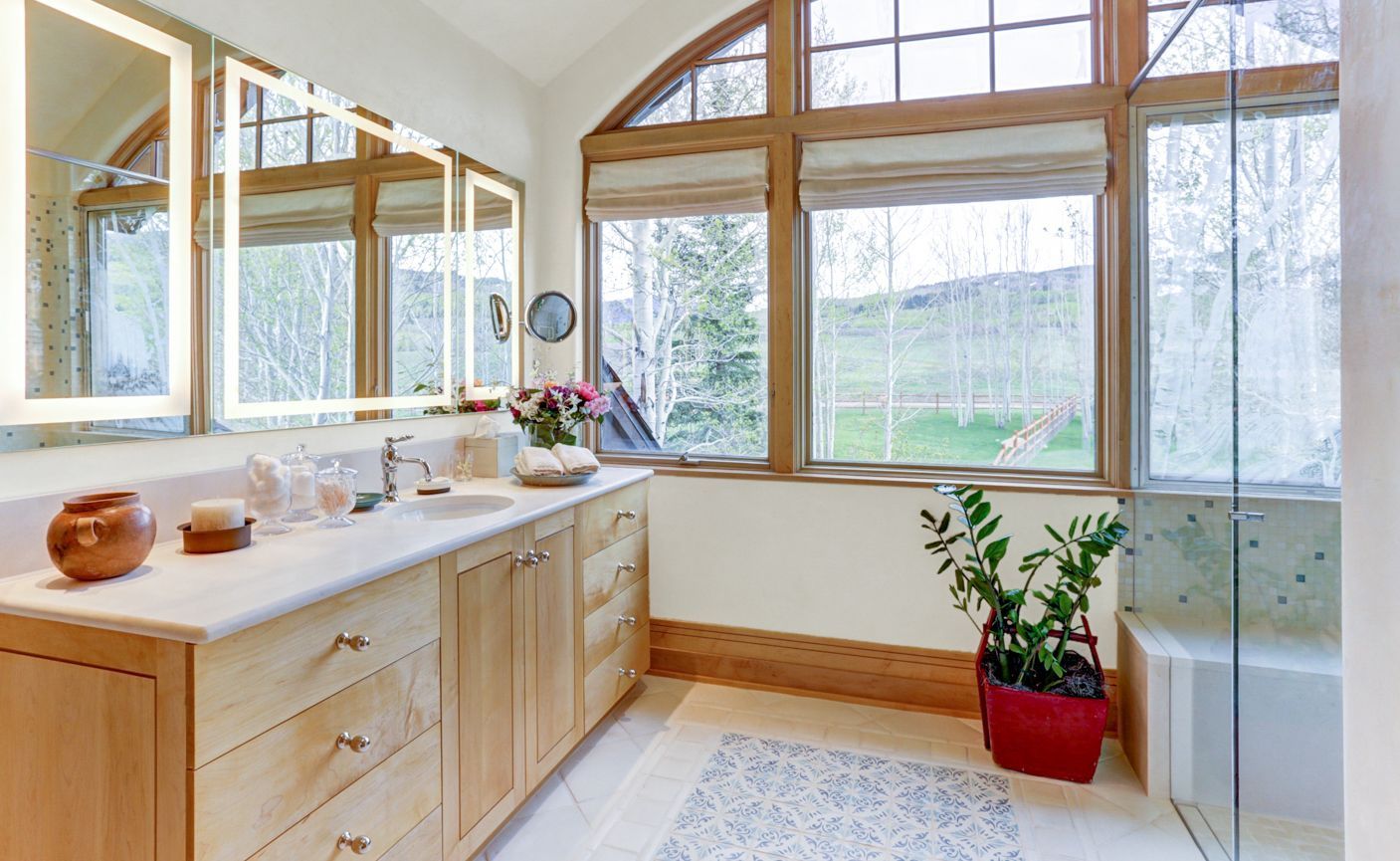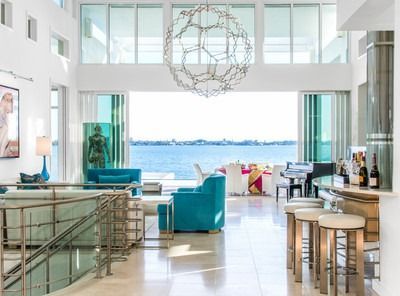Blog

In a world that often celebrates noise, movement, and constant stimulation, the idea of a quiet space carries its own kind of power. A quiet room does not need to be silent; it needs only to invite calm. Within such spaces, we find clarity of thought and ease of spirit. Designing for quiet is not about removing energy from a room, but about creating balance, intention, and emotional stillness. We approach quiet spaces as sanctuaries, places where every detail contributes to serenity. The arrangement of furniture, the texture of materials, and the way light falls through a room all affect how we breathe and think within it. Silence in design is not the absence of elements, but the restraint to choose only what truly belongs. When restraint guides design, the result feels effortless, as though the space has always existed in harmony with itself. The Foundation of Stillness A quiet space begins with proportion and rhythm. When architecture and furnishings are balanced, the eye moves easily, without interruption or distraction . Clean lines, harmonious scale, and thoughtful spacing allow the mind to settle. Too many competing details can feel like noise, while well-measured restraint creates visual and emotional peace. We often choose a soft, neutral palette as a foundation. Subtle gradations of tone and gentle shifts in texture convey sophistication without shouting for attention. Materials such as limestone, linen, and honed wood add tactile warmth and quiet luxury. Each choice encourages calm and continuity, connecting the inhabitant to the space in an intuitive way . Furniture placement is equally important. Pieces are arranged to encourage easy conversation or peaceful solitude, depending on the purpose of the room. Pathways remain open, and every item has both a function and a reason for being there. This intentional simplicity invites comfort rather than austerity, creating a sense of openness that supports rest and reflection. The Role of Light Light defines mood more deeply than any other design element. In a quiet space, light should move slowly, revealing form rather than commanding it. Natural light filtered through sheer drapery creates a living softness that shifts throughout the day. It transforms as the hours pass, offering a quiet reminder of time’s rhythm. Artificial light, when layered thoughtfully, maintains that same balance between clarity and calm. Soft pools of illumination from sconces, concealed fixtures, or table lamps offer intimacy. Rather than flooding a room with brightness, we prefer to shape light with purpose, allowing it to highlight texture, silhouette, and craftsmanship. When light and shadow exist in harmony, the room feels complete, grounded, and emotionally connected to the cycle of the day. Texture and Atmosphere The quietest spaces often speak through texture. A handwoven rug beneath bare feet, the matte surface of plaster, or the gentle sheen of silk each add dimension without noise. We layer these materials deliberately, ensuring that they complement rather than compete . Texture invites touch and awakens the senses while maintaining composure. The presence of natural materials also strengthens a sense of tranquility. Stone, wood, and organic textiles remind us of the world beyond walls. They encourage grounding, connecting the inhabitant to something timeless and restorative. Even subtle imperfections, such as the irregular grain of wood or the slight color variation in hand-glazed tile, lend authenticity. These details tell a quiet story of craftsmanship and care. The Human Element True quiet arises not only from design but from the life that fills it. A quiet space should nurture rather than constrain. It should hold conversation comfortably and allow reflection without emptiness . We design with the understanding that stillness does not come from isolation, but from a thoughtful balance between activity and rest. A well-designed quiet space restores its inhabitants in ways that extend beyond aesthetics. It becomes a place where one can think clearly, breathe deeply, and feel renewed. These spaces remind us that beauty and peace can coexist, that the most profound experiences of design often come not from abundance, but from the intentional pause. Quiet spaces are, at their core, expressions of empathy. They acknowledge that the pace of life can be overwhelming and that beauty can be found in stillness. By designing rooms that soothe and steady, we offer more than visual comfort; we offer renewal, presence, and the quiet strength of simplicity.

There are few experiences more rewarding than standing in a room that feels seamlessly connected to its natural surroundings. When the line between interior and exterior begins to blur, the space takes on a quality of peace and expansiveness that speaks directly to the senses. We have long believed that design should celebrate its setting. In Florida and other coastal regions where the horizon stretches endlessly across sea and sky, the relationship between indoors and out becomes both a design challenge and a source of inspiration. Framing the View In homes where the landscape offers beauty at every turn, the view itself becomes an essential part of the composition . The design begins not with walls or ceilings, but with light, air, and perspective. We take care to frame these vistas so that they become an ever-present element in daily life. Furniture placement, ceiling height, and window proportions are orchestrated to lead the eye toward the horizon. When possible, we minimize obstructions to natural sightlines so that water, sky, and foliage remain uninterrupted. Window treatments are used sparingly, often to soften the edges of a view rather than conceal it. Transparent sheers, linen panels, or tailored shades in neutral hues allow the landscape to remain visible while gently filtering sunlight. Even the choice of hardware and installation height is deliberate, ensuring that each design detail serves the view rather than competes with it. Color and Material Harmony To create a seamless transition between inside and outside, we draw inspiration from the natural palette surrounding the home. The tranquil tones of sand, water, and sky inform the selection of fabrics, finishes, and furnishings. Muted blues, pale greens, and sun-washed neutrals establish a calm rhythm that reflects nature’s own design language. Texture plays an equally important role. Matte finishes , honed stones, woven textiles, and softly grained woods evoke the feeling of a breezy coastal day. These materials not only capture the look of nature but also the feeling of touch, enhancing comfort and authenticity within the space. The Architecture of Flow Spatial planning is fundamental when merging indoors and outdoors. Open layouts allow rooms to flow naturally toward terraces, patios, or gardens. Large glass doors, retractable walls, and clerestory windows create a sense of openness that extends beyond the physical boundary of the home. Lighting design also contributes to the sense of continuity. We prefer layered illumination that transitions smoothly from indoor to outdoor areas. Subtle floor lighting, concealed uplights, and warm exterior sconces create a gentle visual bridge that unites both spaces at twilight. Embracing the Environment Designing for the horizon requires an understanding of the local environment. In Florida’s luminous climate, we work with natural light carefully, tempering brightness with shaded overhangs and reflective finishes. It stands to reason, then, that a bespoke design is paramount. Sustainability , too, plays a quiet but vital role. Using local materials and energy-efficient glazing helps the architecture coexist harmoniously with its surroundings. We consider this environmental sensitivity to be part of the beauty itself. A Living Dialogue Between Inside and Out When done well, the merging of interior and exterior design creates a feeling of effortless continuity. The horizon becomes a living artwork, and the home serves as both its frame and its reflection. Every choice—from the weave of a fabric to the curve of a chair leg—contributes to that dialogue between built and natural beauty. At Hughes Design Associates, we design spaces that invite nature in and encourage the human spirit to look outward. The horizon becomes not only a view, but a daily reminder of openness, serenity, and connection.
